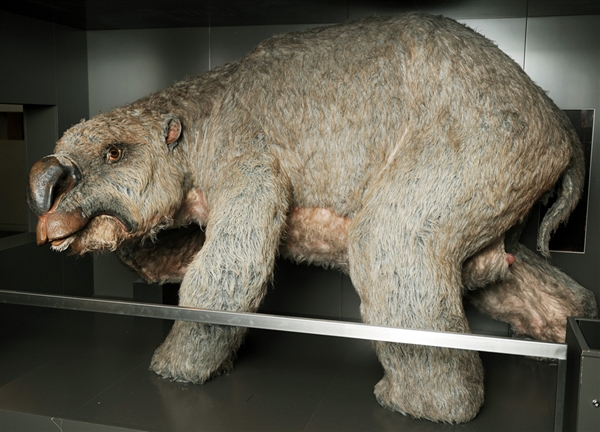
The discovery of about 50 diprotodon skeletons was the biggest to date and could shed light on why the animal become extinct, BBC News reported.
Diprotodon, a relative of the modern wombat, was the largest marsupial that ever lived and had a pouch that was large enough to carry an adult human.
According to the Australian Museum, it was "widespread across Australia when the first indigenous people arrived, co-existing with them for thousands of years before becoming extinct about 25,000 years ago." Fortunately for the people, diprotodon ate plants.
"Exact reasons for the extinction of Diprotodon remain unclear. It seems to have co-existed with Aboriginal people for over 20,000 years, so the 'blitzkrieg' model (extinction upon the arrival of humans) does not hold for Diprotodon," according to a post on the Museum's website.
"Human activity may have had an effect, either through habitat change ('firestick farming') or perhaps via a slow decrease in numbers through selected hunting of juveniles. Aboriginal people did not have 'big game' weapons, and most likely did not target adult Diprotodon," it says.
"Climate change may have also been a significant factor. During the Pleistocene, Australia experienced droughts that were much worse than today's, and much of inland Australia was barren, inhospitable and waterless," it adds.
Blown away
The fossils were discovered at the South Walker Creek mine site in central Queensland by the Barada Barna people, according to the Queensland Museum, where the lead scientist on the project, Scott Hocknull, is based.
"When we did the initial survey I was just completely blown away by the concentrations of these fragments," Hocknull told BBC News.
"It's a paleontologists' goldmine where we can really see what these megafauna were doing, how they actually behaved, what their ecology was," he added. "With so many fossils it gives us a unique opportunity to see these animals in their environment, basically, so we can reconstruct it."
He said it was thought the animals died after they became trapped in a bog. The remains of other species, such as 20-foot lizards called megalania and giant crocodiles, were also found at the site.
"We're almost certain that most of these carcasses of diprotodon have been torn apart by both the crocodiles and the lizards, because we've found shed teeth within their skeletons from both animals," Hocknull told the BBC.



Sometimes i wonder how we survive..